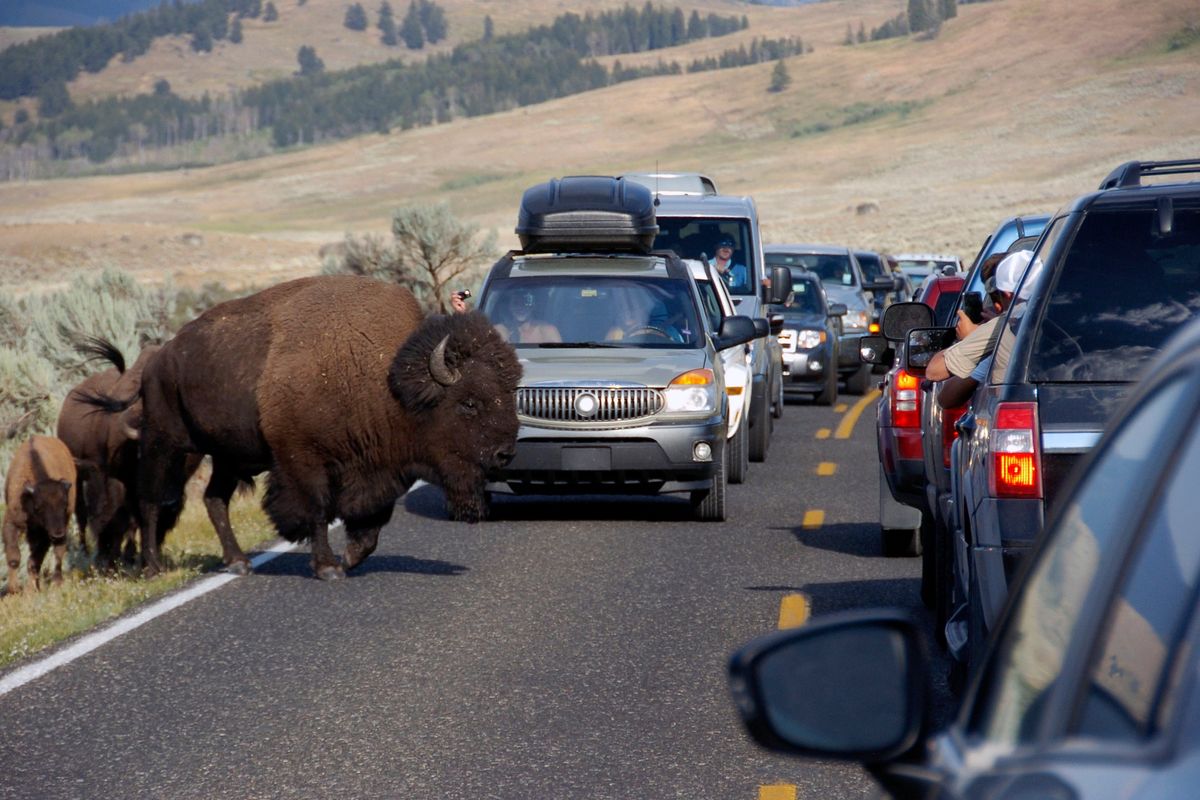Slew of animal attacks highlights importance of paying attention when recreating outdoors

Human-animal encounters – of the violent kind – have been in the news. Most notably, and closest to home, a 9-year-old girl was attacked by a cougar less than two hours from Spokane. Farther afield, a woman was gored by a bison in Yellowstone National Park. A man, also in Montana, was killed by a grizzly in March.
While statistically you’re still more likely to die of a heart attack, these attacks raise an important but easy-to-forget point: Wild animals have their own agendas, ones decoupled from human will and desire. Most of us have forgotten this. Our view of wild animals is a sanitized view, one zoomed in with high-definition cameras and played over our phone’s screens, or perhaps from the comfort and control of a car touring Yellowstone .
This influences how most of us experience wildlife – a high-definition experience, sharp on contrast and fuzzy on context. When I learned to hunt as a 29-year-old, I was shocked at how small and removed the animals appeared, even when viewed through binoculars. Not to mention how hard they were to find. Naturally, this had much to do with my ineptitude as a hunter, but it also revealed a larger, more important fact: The wild does not submit easily to inspection.
Dedicated hunters know this.
“They come there to basically see a live zoo and they don’t realize what the repercussions are if they get too close to an animal and how quickly that animal can turn and go from something that is eating grass and next thing you know hooking it’s horns into you,” said Bob Legasa, a Coeur d’Alene hunter who was nearly killed by a mother grizzly bear in 2018.
Legasa was talking specifically about Yellowstone visitors, but the point holds for all of us living on the bleeding edge of a hundred years of successful species conservation.
“My biggest thing is you always need to be looking and aware of your surroundings,” he said. “If you’re walking along the trail, keep your head up. Look around. Always be on alert. If you can, make noise.”
For a species that’s forced and formed the world to our will – whether it’s dams, roads or fences – it can be a shock to realize there are still pockets of resistance. Creatures that do not care what you want, creatures that can hurt or kill you. Hunters are reminded of this every fall. Men and women that work with animals – whether biologists or ranchers – know this.
None of which is to say that wild animals, be it cougars, wolves, deer or bears, shouldn’t be managed by humans. Any discussion about animals and humans has to include the management perspective, said Marie Neumiller, the executive director of the Inland Northwest Wildlife Council and a member of the Washington Department of Fish and Wildlife’s newly created cougar-focus group.
“There is a quite a bit you have to juggle,” she said.
That’s only becoming more relevant as humans continue to move into former agriculture land. Throughout the West, large parcels of land are being broken up into small chunks, rural subdivisions that are bringing more people closer to animals than before.
While personal responsibility is only part of the response – as Commissioner Kim Thorburn from Spokane emphasized last week when she said, “It concerns me that we if we focus solely on education and outreach and individual responsibility it detracts from asking questions about population approaches” – taking responsibility for your own actions in and around wild animals is more important than ever.
Correction: A woman in Montana was gored by a bison. She did not die due to her injuries, despite widespread reports to the contrary.